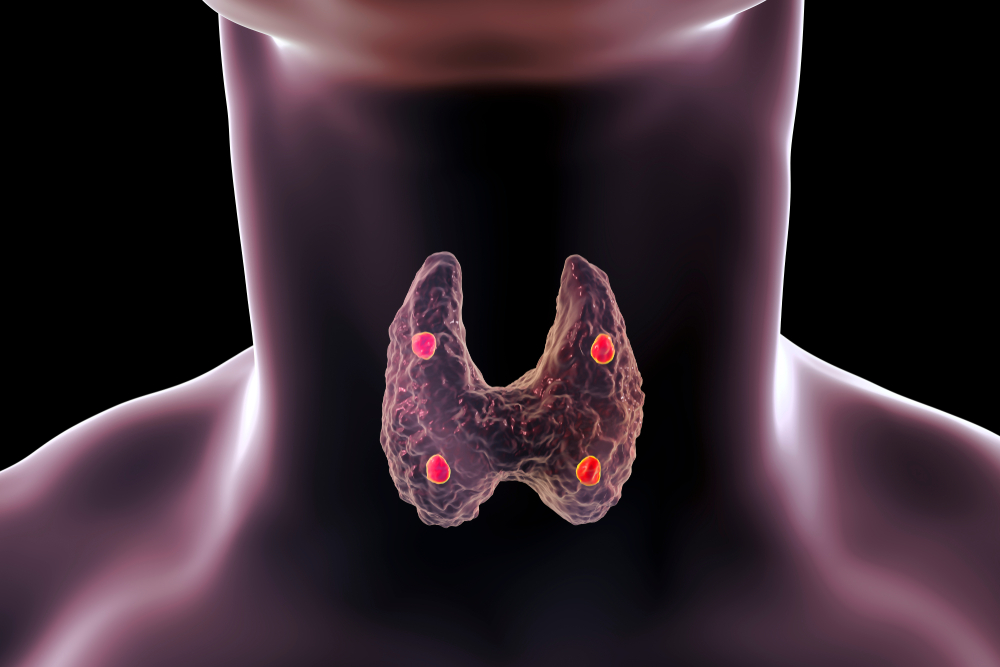Hyperparathyroidism: what to know
Featured Products Promotional FeaturesPosted by: Dental Design 6th May 2021

Dental hygienists and dental therapists are well placed to notice a number of oral symptoms that may raise an alert about an underlying general health condition. In fact, during your career you may have already noticed oral abnormalities, tooth wear and other signs that indicate patients have a condition that requires further professional investigation.
As well as being informed on all of the common disorders that can cause oral symptoms, it’s a good idea to be aware of some of the more unusual ones as well, such as hyperparathyroidism.
Parathyroid conditions come in two types. Hypoparathyroidism means that the parathyroid glands are not producing enough parathyroid hormone, leading to low calcium in the blood. Hyperparathyroidism is effectively the opposite, when glands produce far too much of the hormone leading to a high calcium concentration in the blood.
Those with the former condition are likely to be aware, but those with hyperparathyroidism may not be.
There are three stages of hyperparathyroidism:
- Primary – this is caused by a direct complication that impacts the glands, such as enlargement or the growth of a benign tumour.
- Secondary – this is caused by the glands overcompensating for another disease that is causing a drop in calcium levels, such as kidney failure.
- Tertiary – this form only occurs when someone has received a kidney transplant and the parathyroid glands try to regulate and correct the amount of hormones they are producing in response.[i]
 The oral manifestations of hyperparathyroidism are not common, but can occur regardless of the stage of the condition. One of the most reliable signs is the appearance of oral abnormalities that are swollen and red in colour. Of course, this doesn’t automatically mean that the patient has hyperparathyroidism, but these abnormalities are a good indicator that something is amiss.
The oral manifestations of hyperparathyroidism are not common, but can occur regardless of the stage of the condition. One of the most reliable signs is the appearance of oral abnormalities that are swollen and red in colour. Of course, this doesn’t automatically mean that the patient has hyperparathyroidism, but these abnormalities are a good indicator that something is amiss.
Another potential sign is identifying symptoms of osteoporosis caused by problems with calcium levels. Teeth may be loose or dentures may be ill fitting – these are all things to be wary of and provide solid evidence that further investigation is needed.
Even if investigations reveal that it is not hyperparathyroidism, it is always important to bring attention to any suspicious signs in the oral cavity. Some patients may not be aware that oral abnormalities and swellings could be a sign of something more serious, so we need to catch symptoms early and refer them to the relevant professional so that they can receive the care they need and avoid any serious problems.
Hyperparathyroidism is not a common condition compared to many others, but it’s still one that we, as healthcare professionals, need to be aware of. If you have any questions or concerns, it’s always best to recommend referral for a second opinion, helping the patient find out exactly what is causing any abnormalities and protecting yourself from any potential legal action.
Dental hygienists and dental therapists are often first in line to notice when abnormalities occur. By keeping up to date with conditions that can cause oral manifestations, you can help patients receive a better level of care.
For more information about the BSDHT, please visit www.bsdht.org.uk
call 01788 575050 or email enquiries@bsdht.org.uk
Author:
DIANE ROCHFORD – President BSDHT. CEB DIP DENT HYGIENE 1996, BSC (HONS) 2016 – DENTAL HYGIENIST
[i] Parathyroid UK. Hyperparathyroidism. Link: https://parathyroiduk.org/hyperparathyroidism/ [Last accessed March 21].
No Comments
No comments yet.
Sorry, the comment form is closed at this time.



